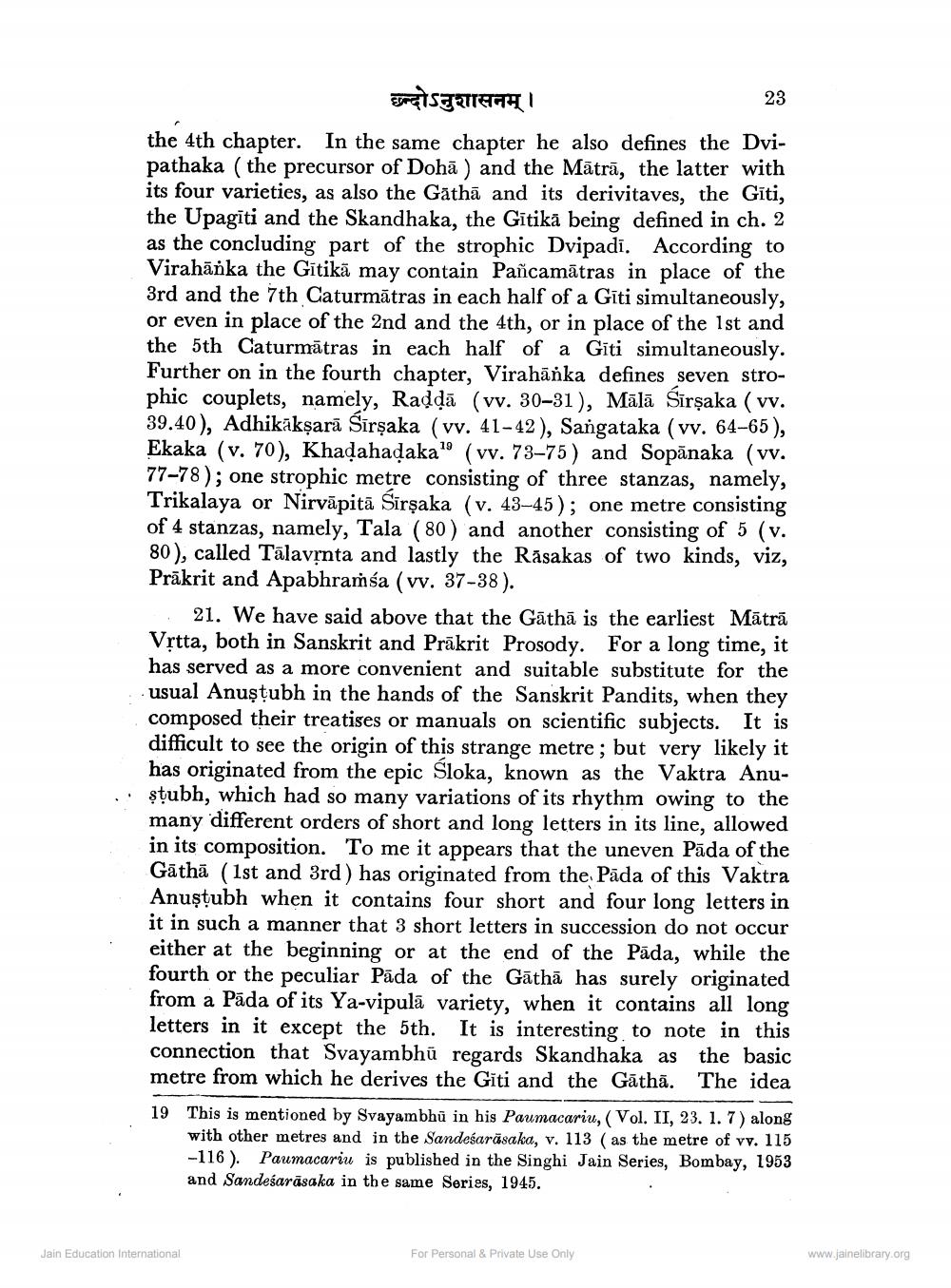________________
छन्दोऽनुशासनम् ।
the 4th chapter. In the same chapter he also defines the Dvipathaka (the precursor of Doha) and the Matra, the latter with its four varieties, as also the Gatha and its derivitaves, the Giti, the Upagīti and the Skandhaka, the Gitikā being defined in ch. 2 as the concluding part of the strophic Dvipadi. According to Virahanka the Gitikā may contain Pañcamātras in place of the 3rd and the 7th Caturmatras in each half of a Giti simultaneously, or even in place of the 2nd and the 4th, or in place of the 1st and the 5th Caturmatras in each half of a Giti simultaneously. Further on in the fourth chapter, Virahäňka defines seven strophic couplets, namely, Radḍā (vv. 30-31), Mālā Sīrṣaka (vv. 39.40), Adhikākṣarā Sīrṣaka (vv. 41-42), Sangataka (vv. 64-65), Ekaka (v. 70), Khadahaḍaka" (vv. 73-75) and Sopanaka (vv. 77-78); one strophic metre consisting of three stanzas, namely, Trikalaya or Nirvapitā Sīrṣaka (v. 43-45); one metre consisting of 4 stanzas, namely, Tala (80) and another consisting of 5 (v. 80), called Talavṛnta and lastly the Rasakas of two kinds, viz, Prakrit and Apabhramśa (vv. 37-38).
21. We have said above that the Gatha is the earliest Mātrā Vṛtta, both in Sanskrit and Prakrit Prosody. For a long time, it has served as a more convenient and suitable substitute for the usual Anuṣṭubh in the hands of the Sanskrit Pandits, when they composed their treatises or manuals on scientific subjects. It is difficult to see the origin of this strange metre ; but very likely it has originated from the epic Śloka, known as the Vaktra Anustubh, which had so many variations of its rhythm owing to the many different orders of short and long letters in its line, allowed in its composition. To me it appears that the uneven Pada of the Gāthā (1st and 3rd) has originated from the Pada of this Vaktra Anustubh when it contains four short and four long letters in it in such a manner that 3 short letters in succession do not occur either at the beginning or at the end of the Pada, while the fourth or the peculiar Pada of the Gatha has surely originated from a Pada of its Ya-vipula variety, when it contains all long letters in it except the 5th. It is interesting to note in this connection that Svayambhu regards Skandhaka as the basic metre from which he derives the Giti and the Gathā. The idea
23
19 This is mentioned by Svayambhu in his Paumacariu, (Vol. II, 23. 1. 7) along with other metres and in the Sandesarasaka, v. 113 (as the metre of vv. 115 -116). Paumacariu is published in the Singhi Jain Series, Bombay, 1953 and Sandesarasaka in the same Series, 1945.
Jain Education International
For Personal & Private Use Only
www.jainelibrary.org




